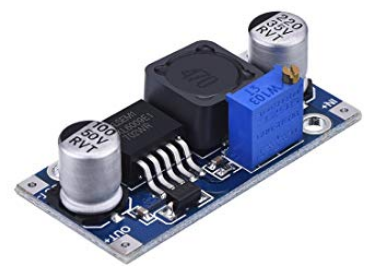"My arduino controlling motors crashes when motors actuate".
This is a frequently asked question here. What's happening is you wired it so the Arduino takes power from the same point in the wiring as the motor, and the wiring or the supply is sagging voltage because of the motor's load. This is normal. Motors do that. They should not be on the same wiring/supply. I can't tell you how many of these we fix simply by pulling a dedicated pair of wires from the power source just for the Arduino, or in your case, a dedicated DC/DC.
The gory details
Your $1.57 DC/DC has a capacity of 4A on the input side (3.7V), so we are talking 14.8 watts of supply power, gross. Let's toss it a bone and assume 85% conversion efficiency, now we have 12.58 watts.
Your motors have a Locked Rotor Amerage of 750ma at 12V, or 9 watts. You have two of them. Uh-oh.
Now, if we bet the farm on these motors being resistive, then E=IR
12V=0.750A x R
R=16 ohms
9.5V=I * 16 ohms if it's a resistor
I = .59375A hopeful locked rotor amperage
P = .59375A x 9.5V = 5.64 watts
2 motors = 11.28 watts = you are really pushing a 12.58W source
So you see, even in the most optimistic case: 85% efficiency, purely resistive motors, disregarding the Arduino's draw and the motor controller's efficiency -- you are kissing the absolute limits of the power supply.
Since this is a $1.57 DC/DC from China, I would not expect good performance at the edges of the envelope.
The $1.57 solution is to get another one to power the Arduino, and let the motors sag. Motors do that, nobody cares.
That's if your Arduino even needs 9.5V. If it can run on 3.3V, then hotwire it straight off the battery. By which I mean straight off the battery, not off the input side of the DC/DC: they are not the same thing because wires are not 0 resistance.



